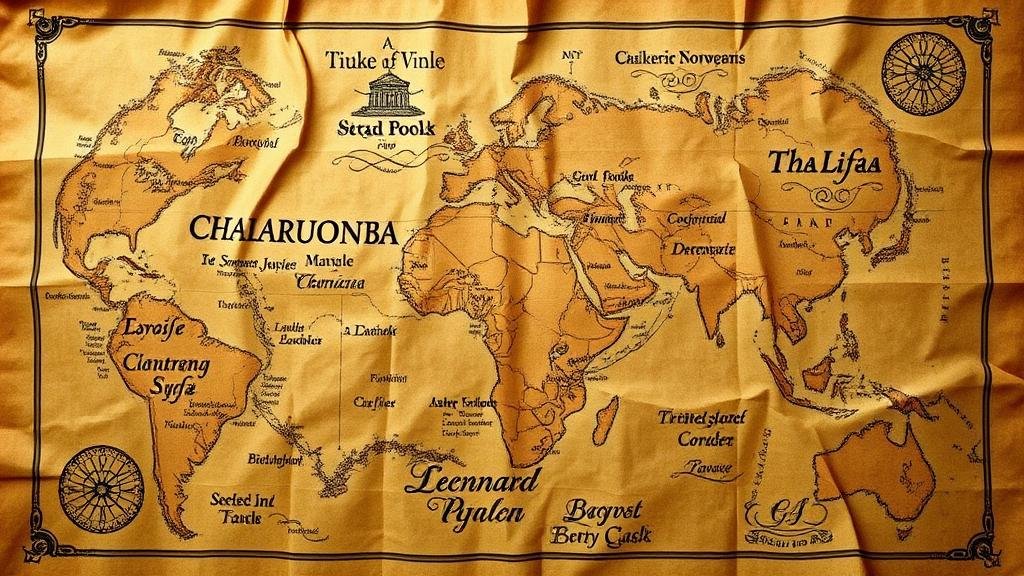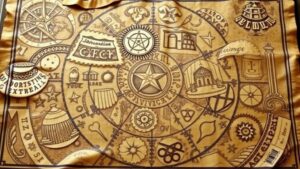Reading Overlapping Clues Found in Layered Treasure Maps
Understanding Layered Treasure Maps
Layered treasure maps are intricate tools used to navigate complex environments and identify hidden treasures. They often present a challenge, as they can feature overlapping clues that require careful analysis and critical thinking to decipher. This article delves into the nature of these maps, the significance of overlapping clues, and strategies for effective interpretation.
The Structure of Layered Treasure Maps
Layered treasure maps typically consist of multiple layers, each containing distinct pieces of information relevant to locating a treasure. e layers may include geographical features, historical context, or symbolic representations. A common analogy to understand this structure is a multi-layered cake, where each layer adds flavor and complexity to the overall experience.
- Geographical Layer: This layer might depict topographical features such as mountains, rivers, and valleys.
- Historical Context: Here, timestamps and events may be detailed to provide context on why the treasure exists.
- Symbolic Representations: This may include icons or illustrations suggesting clues or dangers associated with the treasure.
Each layer adds depth to the map, allowing users to interpret clues in a multi-dimensional manner. But, overlapping clues often create requirements for specific analytical skills to extract meaningful insights.
The Importance of Overlapping Clues
Overlapping clues are critical for successful navigation through layered maps. serve several purposes, primarily enhancing the user’s understanding and providing multiple pathways to the truth. Understanding the dynamics of these clues requires focusing on four main aspects:
- Redundancy: Overlapping clues often provide the same piece of information in varied formats, enhancing reliability.
- Contextualization: They help situate clues within a broader context, tying them to historical or geographical markers.
- Clarification: Often, clues will clarify one another, serving as validations that reinforce the interpretation of other clues.
- Challenge Resolution: When faced with false leads or ambiguities, overlapping clues can help resolve discrepancies.
For example, consider a layered treasure map that uses a mountain range as a landmark. If one layer contains a historical account of a lost treasure buried beneath the shadow of the mountains, while another layer features a depiction of the mountain with a shaded area indicating elevation, the overlapping evidence strengthens the interpretation of where the treasure might be hidden.
Application: Real-World Examples
Overlapping clues found in treasure maps have practical applications beyond the hunt for physical treasures. can be applied in fields such as archaeology, adventure tourism, and even in video game design. Here are a few notable examples:
- Archaeological Discoveries: In archaeological studies, layered maps guide teams to buried artifacts. For example, the discovery of the ancient city of Troy was facilitated by multiple historical documents that overlapped geographically with the sites being excavated.
- Adventure Tourism: Businesses leverage layered maps to create engaging treasure hunts for tourists. By strategically overlapping clues, they create immersive experiences that are both fun and educational.
- Video Game Design: Many video games incorporate layered maps with overlapping clues, enhancing players experiences as they unravel the games storyline. Games like The Legend of Zelda utilize this technique to direct players toward objectives.
Strategies for Deciphering Overlapping Clues
Successfully unraveling clues from layered treasure maps requires a systematic approach. Here are some strategies that can enhance your mapping skills:
- Identify Connections: Look for relationships between various layers. Identify patterns and trends that may not be readily apparent.
- Visualize Information: Create diagrams or flowcharts that demonstrate how clues may relate to one another. Visual aids can facilitate a clearer understanding of the information.
- Prioritize Clues: Some clues may hold more weight than others, so rank them according to their relevance and reliability.
- Collaborate: Engage with others. Collaboration can introduce diverse perspectives and insights that may illuminate hidden connections.
Conclusion
Reading overlapping clues in layered treasure maps requires a careful blend of analytical skills and creative thinking. By understanding the structure of these maps, recognizing the significance of overlapping clues, and employing effective strategies for interpretation, individuals can successfully navigate complex terrains to uncover hidden treasures. Whether in archaeology, tourism, or gaming, the art of deciphering layered maps provides valuable lessons in critical analysis and problem-solving.
As you embark on your exploration of layered treasure maps, remember that patience and diligence in recognizing overlapping clues can lead to not just the discovery of treasure, but also to a deeper appreciation of the stories and histories entwined in our world.



